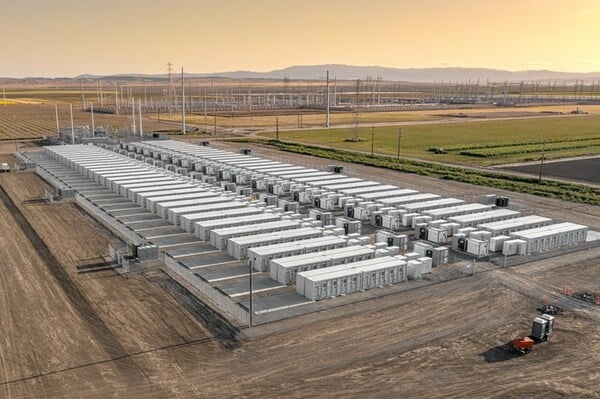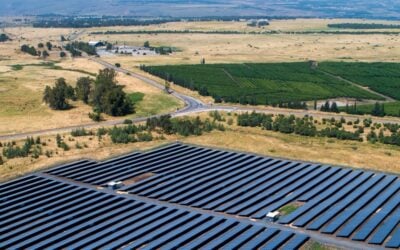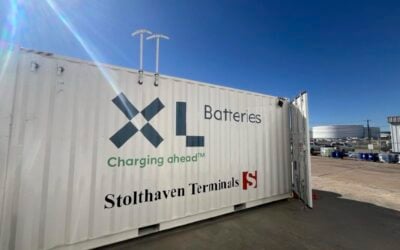
There will be ‘foundational’ shifts in the US’ two largest renewables and energy storage markets this year, California (CAISO) and Texas (ERCOT), significantly affecting battery storage market participation.
That characterisation comes from Tom Thunell, co-founder and COO of optimisation platform Tyba Energy, who gave Energy-Storage.news his views on what this year holds for the US energy storage market ahead of next week’s Energy Storage Summit USA 2025 in Dallas.
Enjoy 12 months of exclusive analysis
- Regular insight and analysis of the industry’s biggest developments
- In-depth interviews with the industry’s leading figures
- Annual digital subscription to the PV Tech Power journal
- Discounts on Solar Media’s portfolio of events, in-person and virtual
Or continue reading this article for free
In this short Q&A, he discusses the prospects for battery energy storage system (BESS) deployment over the next 12 months, trends in financing and commercialisation, as well as the big changes in California and Texas which will affect participation models for BESS.
The two grids, run by ISOs CAISO and ERCOT, respectively, account for the vast majority of grid-scale BESS deployed in the US today, which reached around 30GW at the end of 2024.
Thunell will be speaking on ‘The Future of Grid-Scale Portfolios: Battery Economics, Political Updates and the Power Market’ panel discussion, alongside developers/IPPs MN8 Energy, SB Energy, Spearmint Energy and esVolta, on Day One of the two-day event in Dallas.
Tyba raised $13.9 million in a Series A earlier this year. Thunnell also discussed the future of clean energy tax credits in the US in light of Trump’s executive orders signalling a potential repeal of the Inflation Reduction Act – those were included in a separate, Premium article published on this site today.
Energy-Storage.news: What is the outlook for the US energy storage market in 2025?
Tom Thunell: Through 2025, we will continue to see energy storage resources brought online to
support grid stability and enhance project profitability.
As demand for energy continues to grow (forecasted to increase 15.8% by 2029), and renewables continue to comprise the majority of new generation coming online (solar/wind account for over 90% of new generation planned for 2025), energy storage is imperative to ensure we can meet this demand reliably.
Storage also has the potential to increase the profitability of all projects given its unique ability to choose when it buys/sells energy. This load shifting means it can hold out for the highest prices to maximize revenue. For this reason – and a few others (e.g. long interconnection queues) – we anticipate a large uptick in the hybridisation of existing generation resources.
We also expect to see participation models evolve a lot in 2025:
- Advanced markets are rolling out foundational shifts (e.g. ERCOT RTC+B,
CAISO’s Slice of Day RA). - Emerging/maturing markets are acknowledging the need for better storage
participation models and actively working to incorporate them. - Being agile/quick to adjust to these shifts (and customise by market) will be key
for storage operators.
What does the mixture of BESS price falls, supply chain bottlenecks and EPC shortages look like for deploying BESS projects this year?
While there are diametric forces at play, we believe that the momentum for deploying energy storage projects will continue. The value that storage brings to both grid stability and project economics is too compelling to put on hold. Even with logistical challenges, we’ve seen developers and operators pushing forward and prioritising projects that maximise revenue potential.
For the majority of companies we are working with, assets slated for 2025 COD are already well into development/construction and the focus has shifted to ensuring operational readiness. These elements – ranging from market integrations to developing the optimal default operating strategy for your project – are less impacted by those factors.
How is the financing and commercialisation of BESS in the US evolving to enable more deployments?
We’ve seen a continued scaling up of deployments in the two largest storage markets of CAISO and ERCOT. CAISO continues to be attractive for storage developers and investors, given the long term RA contracts, which provide consistent and predictable revenue.
We’ve also seen an increasing amount of storage financed and deployed in ERCOT. This shows that the finance community is open to projects without contracted (or fully contracted) revenue streams. Overall this is an extremely positive development given the upside potential tied to merchant operations in ERCOT.
At the same time, we have seen the emergence of different risk products (e.g. shorter tenor hedges, longer tenor tolls) to provide some revenue certainty.
Another trend we are seeing is companies focusing efforts in emerging US markets – with initial projects slated for later this year or 2026. Underwriting in these markets can look a bit different and sometimes be based on new/evolving incentive programs.
The storage community is looking to better understand these structures to gain confidence in project viability. One great example of this – we have worked with a number of customers in recent months to model projects in NYISO under the ISC program. This has been a big draw for many developers and operators given the downside risk protection the program provides.
ERCOT RTC+B, CAISO’s Slice of Day RA explained
ERCOT’s Real-Time Co-Optimization with Batteries (RTC+B) project will change how it manages real-time and day-ahead markets by co-optimising energy and ancillary services in the real-time market and introducing new block products.
It aims to improve the efficiency of dispatching resources, potentially creating more precise price signals from the real-time market, and reducing arbitrage opportunities between day-ahead and real-time markets by fostering better price convergence between the two. It is set to go live on 5 December, 2025.
CAISO’s Slice of Day (SOD) framework meanwhile will change resource adequacy (RA) obligations for load serving entities (LSEs) from a simple monthly target to a 12-month, 24-hour target. RA is the bedrock of the business case for grid-scale BESS and has helped it become the leading state by deployments.
Consultancy Ascend Analytics said that the change ‘significantly reduces the RA value of standalone storage relative to previous accounting frameworks’. It is being implemented through 2025.
Energy Storage Summit USA awards
This year’s iteration of the Energy Storage Summit USA will, for the first time, include an Awards segment, just as the EU event has launched its own in the last two years.
The main category of ‘Individual Contribution to Energy Storage’ includes some names which may be familiar to Energy-Storage.news, such as American Energy Storage Innovations’ (AESI) Bud Collins and Powin’s Danny Lu. The full list of nominees is:
- Bud Collins
- Sara Sultan
- Pablo Otin
- Anum Chandani
- Cihan Karaman
- Ryan Franks
- Vaughn Morrison
- Danny Lu
- Dr Gary Dorris
- Ben Firestone
Meanwhile, Magvolts Energy Inc, Powin Calpine and Pier Solutions are the nominees for the Project of the Year, while there is also a Developer of the Year category.






